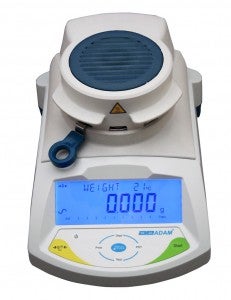Moisture balances require the user to understand how to test their particular material, having an idea of the results expected and knowing how to prepare the sample correctly. Depending on your material, not only can water be evaporated but it may be oils, alcohols etc. that are also altered by heat.
Moisture balances work by drying samples using heat from halogen lamps mounted above the sample. You can change the temperature profiles for this, either slowly heating up to a set temperature or ramping up more quickly to reach the set temperature.
Sample Preparation
One aspect that is not stressed enough is that the sample preparation is the single most important consideration to obtaining accurate results. The sample needs to be prepared so that the whole sample is heated uniformly with the moisture near the surface of the material. When the sample is placed on the pan it should be as thin as possible although typically 3-10g must be used to ensure good repeat-ability of results.


Powders require no further prep, but otherwise the sample should be ground or chopped – it is important to get the sample as fine as possible.
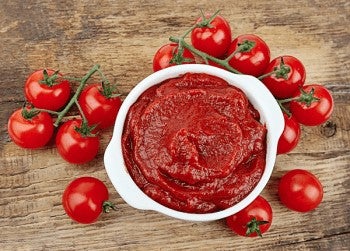

Pastes or liquids should be evenly and thinly spread on glass fibre pads.
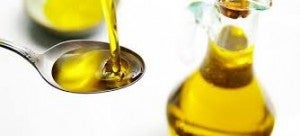

Liquids that may splatter when heated (butter, oils) may need to spread on glass fibre pads or could be mixed with dry sand.
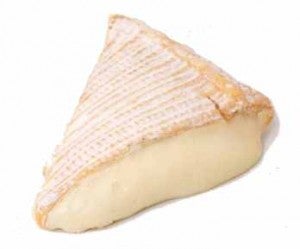

Some materials, such as soft cheese requires special preparation. To prevent the sample from splattering or forming a skin it is advised to use dry sand as a buffer material. It would be necessary to dry the sand using an oven to ensure no moisture remains. You can then place the sand on the sample pan and tare the analyser, mix the sand with the cheese to make a smooth mixture and spread this over the sample pan before starting the analyser.
Alternatively you could spread the cheese on dry spun glass gauze to assist in spreading the heat and preventing splatter or skins. Make sure you remember to tare the analyser with the gauze before testing for accurate results.
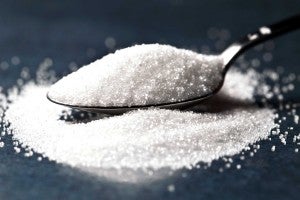

PLEASE NOTE: Some materials are not suitable to be heated in a moisture analyser. Sugar for example will bind the water to the sugar molecules so strongly, the heat will not remove the water before the sugar is burned. Some plastics will also have such low moisture percentage that the moisture balance will not have the heat required for extraction.
The Adam PMB moisture balance comes in two models, the first with capacity of 50g and can measure with a readibility of 0.001g/0.01%, the second with a capacity of 200g, readability of 0.01/0.05%.
For more information on moisture balances we have written other blogs on Moisture balance measuring techniques, setting up a moisture balance and the Adam PMB unit. For more information about sample preparation for moisture balances or which one you should go for give our technical team a call on 01954 233 120, email support@camlab.co.uk or fill in the form below.

